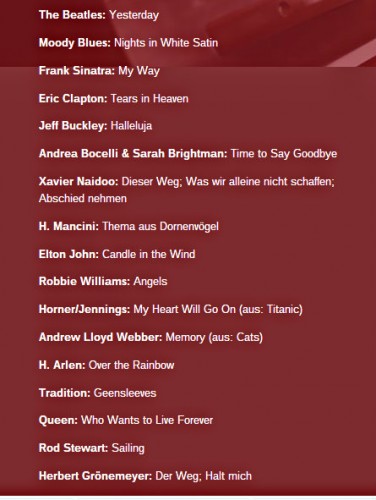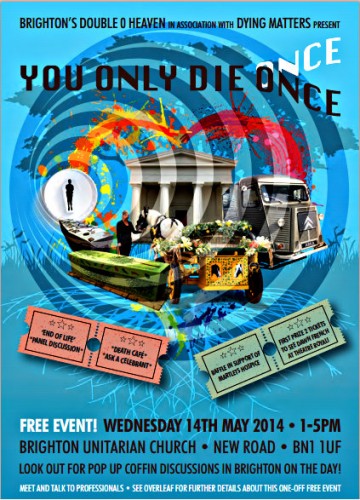We recently had our attention drawn to a new campaign that has been launched by the National Society of Allied and Independent Funeral Directors (SAIF), in conjunction with Westerleigh, the cremation company. The campaign (described as a toolkit) is intended to aid small funeral businesses faced with the aggressive marketing tactics of large direct cremation companies.
We understand how the rapid advance of direct cremation is changing the funeral landscape, so we were interested to see how the trade association for independent funeral directors has responded to this threat to members’ businesses.
Unfortunately, as you will see, it seems that they have got it very wrong indeed. In our opinion, anyway.
One component of the ‘toolkit’ is a video, apparently designed to ‘educate and engage consumers about the value of attended funerals.’
It features a farmer, a herd of cows and some men carrying a coffin into a crematorium, with the finishing strapline ‘A mooving funeral can really help your herd say goodbye’.
There are various clips of the full video that are suitable for use on social media, and SAIF members are encouraged to share ‘this simple but powerful video on your platforms to remind people why funerals matter’.
On behalf of the GFG directors, and with their full agreement, I wrote to the SAIF Chief Executive and the Executive Board of SAIF at the end of June, detailing the multiple issues we have with this video. Our letter is below:
Dear Terry and Officers of SAIF Executive 2023
I am writing in response to the ‘Mooving Funerals’ publicity campaign that you have launched, and that you are encouraging SAIF members to adopt.
I would like to make some observations about the campaign, both from the personal perspective of a bereaved person, and secondly from a professional standpoint.
To begin with my personal perspective, I feel strongly that the campaign shows a lack of understanding about why the term ‘moving on’ is profoundly unhelpful for bereaved people. It is now widely understood by grief specialists that ‘moving on’ is what those surrounding the bereaved often wish they would do – not something that the bereaved are able to do. Rather they (myself included) need to be supported to integrate the grief and come to terms with it. To find a way to grow from it – and live with it. The lame play on words and the imagery of docile livestock used to support your theme compounds my disquiet; I find the cattle imagery particularly offensive.
I have shown the campaign material to other bereaved people, who have all reacted in the same way, with surprise and annoyance both at the use of this unhelpful term as the basis for a trade association sponsored PR campaign, and at the visual interpretation of wordplay on the ‘moving on’ term of a herd of cows representing a bereaved family.
From a professional standpoint, this campaign does not appear to contend with the serious issue of the increasing numbers of direct cremations and the impact this is having on the profession. It does not address the many reasons why people choose a direct cremation; a SAIF campaign that sought to do so could have been a great opportunity to show how creative, involving and therefore helpful (therapeutic?) an attended funeral can be. Instead, we have a blend of attention-grabbing animal casting along with the usual, tired images of men carrying a coffin into a crematorium.
Even if some viewers find the video cute or funny, I very much doubt that it will make anyone think clearly enough to change their mind about direct cremation. There is no attempt to address the underlying motivations of choosing an unattended funeral, or the very real consequences of missing out on the chance to say a collective farewell. The critical purpose of the video fails because of these fundamental flaws.
For all the reasons above, I am extremely surprised that SAIF has decided that this campaign is appropriate for members to adopt and use in their advertising and social media.
I am very concerned that should any members choose to do so, individual companies will risk offending many people in their communities, losing potential future business while simultaneously failing to stem the haemorrhage of attended funerals in favour of the aggressively marketed direct cremation companies.
I would urge you to reconsider your support for – and promotion – of this campaign.
With best wishes
A few days later, we received a response which read as follows:
Dear Fran,
Thank you for taking time to express the views of the GFG on the first iteration of the SAIF Direct Cremation toolkit. The video is one component of the toolkit.
It is never easy to address the theme of death in our society. Interestingly the retired English cricketer, Andrew Strauss, wrote about his wife’s death in 2018 from lung cancer and how the subject is still a difficult subject to raise in our society.
The video is for those who are making plans, so to inform their options in order to avoid the potential risk that an unattended cremation may harm their grief journey when they may not fully understand what they are entering into.
Your letter has been shared with the SAIF leadership as requested.
Warm wishes
It seems, therefore, that SAIF are committed to this bovine-centric video campaign as a way of addressing the rapid advance of direct cremation companies into the funerals market.
We will be curious to see how SAIF members respond. Is this something that SAIF members welcome from their trade association? Or is there a similar level of disquiet as we have about the messaging? And what about the public reaction?
We would be very interested to hear what readers of this blog think – do please comment below.
(We did inform SAIF that we would be publishing both our letter and their response on the GFG blog)


